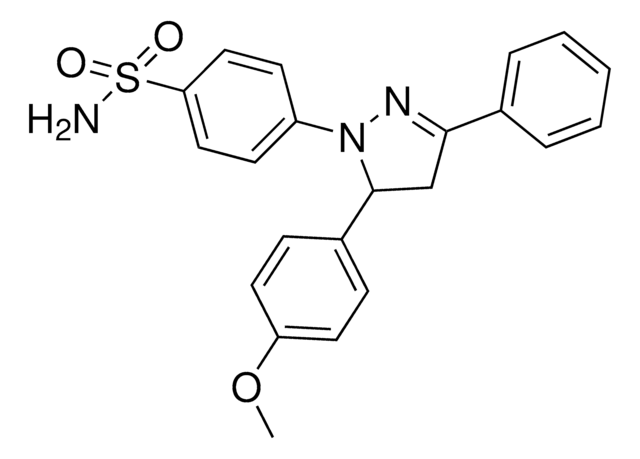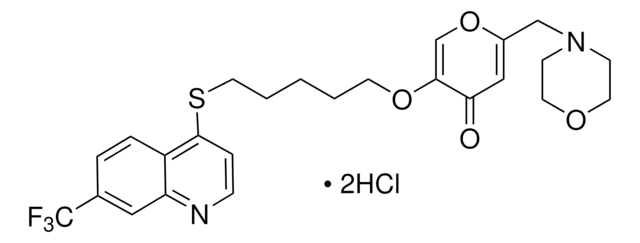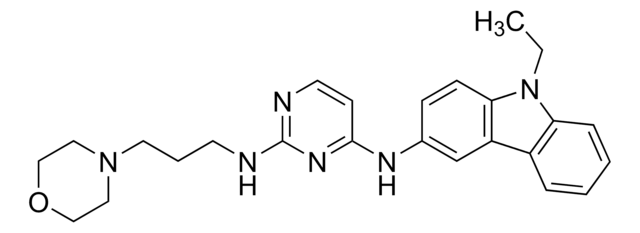SML1253
CASIN
≥98% (HPLC)
Synonym(e):
2-[(2,3,4,9-Tetrahydro-6-phenyl-1H-carbazol-1-yl)amino]ethanol, Cdc42 Activity-Specific Inhibitor
About This Item
Empfohlene Produkte
Qualitätsniveau
Assay
≥98% (HPLC)
Form
powder
Farbe
, white to very dark brown
Löslichkeit
DMSO: 20 mg/mL, clear
Lagertemp.
2-8°C
SMILES String
OCCNC1CCCC2=C1NC3=C2C=C(C4=CC=CC=C4)C=C3
InChI
1S/C20H22N2O/c23-12-11-21-19-8-4-7-16-17-13-15(14-5-2-1-3-6-14)9-10-18(17)22-20(16)19/h1-3,5-6,9-10,13,19,21-23H,4,7-8,11-12H2
InChIKey
RXIUMAOXORBRCY-UHFFFAOYSA-N
Anwendung
- to study its effects on the stimulation of extracellular vesicles (EVs) in intestinal epithelial cells
- to study its effects on mice jejunum
- to study its effects on microbial adhesion-triggered endocytosis (MATE) vesicle morphology in segmented filamentous bacteria (SFB)-colonized mice
Biochem./physiol. Wirkung
Lagerklassenschlüssel
11 - Combustible Solids
WGK
WGK 3
Flammpunkt (°F)
Not applicable
Flammpunkt (°C)
Not applicable
Analysenzertifikate (COA)
Suchen Sie nach Analysenzertifikate (COA), indem Sie die Lot-/Chargennummer des Produkts eingeben. Lot- und Chargennummern sind auf dem Produktetikett hinter den Wörtern ‘Lot’ oder ‘Batch’ (Lot oder Charge) zu finden.
Besitzen Sie dieses Produkt bereits?
In der Dokumentenbibliothek finden Sie die Dokumentation zu den Produkten, die Sie kürzlich erworben haben.
Kunden haben sich ebenfalls angesehen
Unser Team von Wissenschaftlern verfügt über Erfahrung in allen Forschungsbereichen einschließlich Life Science, Materialwissenschaften, chemischer Synthese, Chromatographie, Analytik und vielen mehr..
Setzen Sie sich mit dem technischen Dienst in Verbindung.








